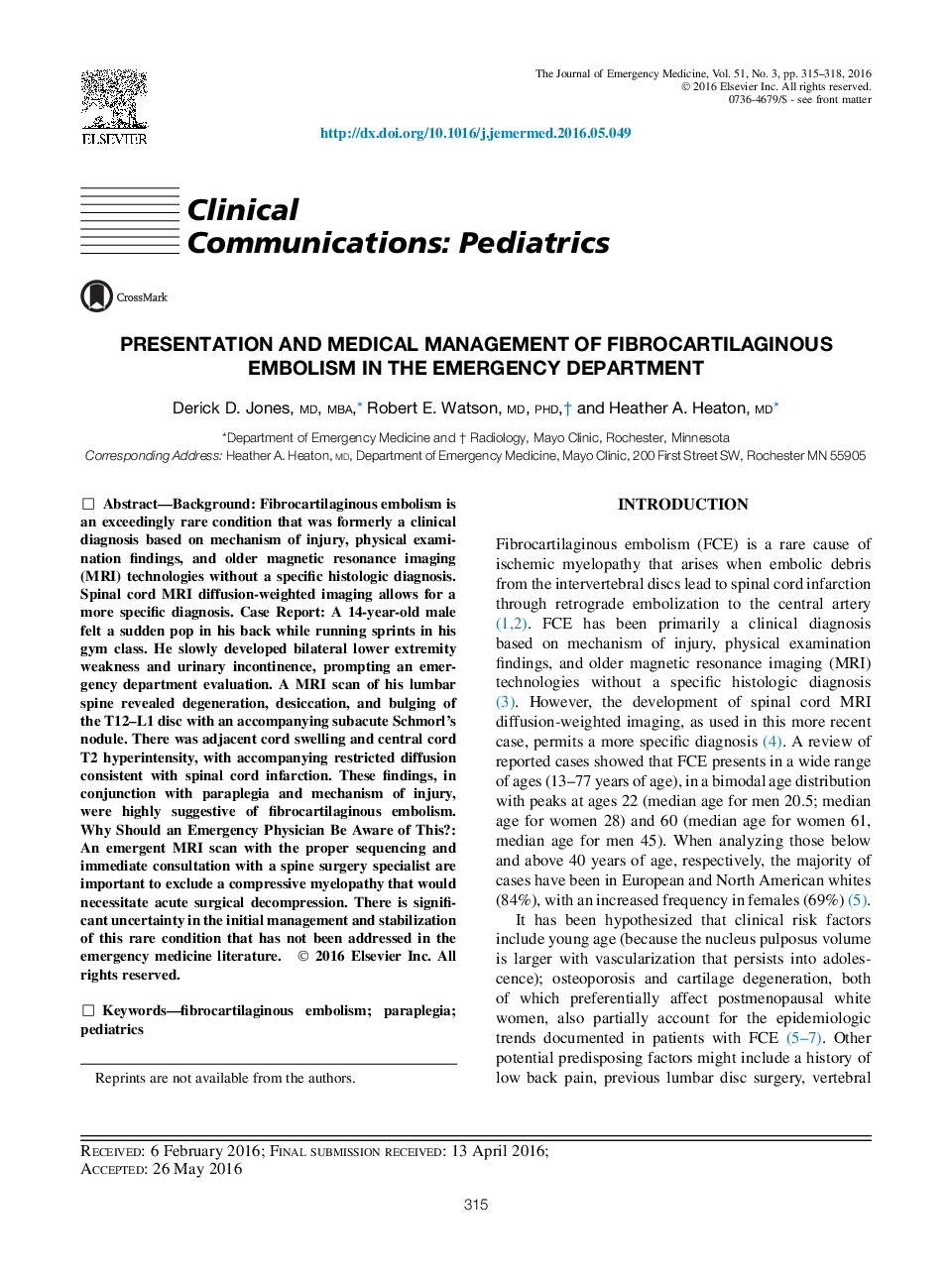| Article ID | Journal | Published Year | Pages | File Type |
|---|---|---|---|---|
| 3245613 | The Journal of Emergency Medicine | 2016 | 4 Pages |
BackgroundFibrocartilaginous embolism is an exceedingly rare condition that was formerly a clinical diagnosis based on mechanism of injury, physical examination findings, and older magnetic resonance imaging (MRI) technologies without a specific histologic diagnosis. Spinal cord MRI diffusion-weighted imaging allows for a more specific diagnosis.Case ReportA 14-year-old male felt a sudden pop in his back while running sprints in his gym class. He slowly developed bilateral lower extremity weakness and urinary incontinence, prompting an emergency department evaluation. A MRI scan of his lumbar spine revealed degeneration, desiccation, and bulging of the T12–L1 disc with an accompanying subacute Schmorl’s nodule. There was adjacent cord swelling and central cord T2 hyperintensity, with accompanying restricted diffusion consistent with spinal cord infarction. These findings, in conjunction with paraplegia and mechanism of injury, were highly suggestive of fibrocartilaginous embolism.Why Should an Emergency Physician Be Aware of This?An emergent MRI scan with the proper sequencing and immediate consultation with a spine surgery specialist are important to exclude a compressive myelopathy that would necessitate acute surgical decompression. There is significant uncertainty in the initial management and stabilization of this rare condition that has not been addressed in the emergency medicine literature.
